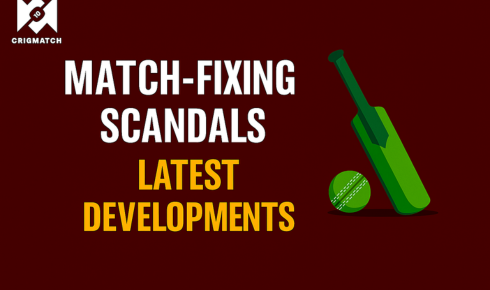Match-Fixing Scandals – Latest Developments

Match-fixing scandals have long shadowed cricket’s integrity. As the sport evolves under tighter scrutiny, new incidents continue to surface, prompting legal and institutional responses across the globe. Let’s explore the most recent developments that underscore both the persistent risk and the fightback mechanisms reshaping the game.
1. UP T20 League Shock: Rs 1 Crore Bribe Attempt
In a startling turn, a match-fixing plot emerged from the ongoing Uttar Pradesh T20 League. The team manager of Kashi Rudras, Arjun Chauhan, reported being offered Rs 1 crore by a supposed bookie via Instagram. The offer entailed influencing a player’s performance for illegal gain. The BCCI’s Anti-Corruption Unit escalated the matter, leading the Lucknow Police to register an FIR. This incident lays bare the vulnerabilities in domestic circuits and the reach of corrupt influences.
2. Former Sri Lankan Spinner Charged Under New Law
In Sri Lanka, former off-spinner Sachithra Senanayake has been formally indicted under the country’s newly enacted anti-sports corruption law. The allegations stem from match-fixing activities during a domestic tournament in 2020. This marks the first prosecution under the updated legal framework—highlighting Sri Lanka’s enhanced approach to tackle corruption in cricket.
3. ICC Bans for Fixing Violations
The ICC Anti-Corruption Tribunal recently imposed a five-year ban on former Sri Lankan domestic cricketer Saliya Saman. He was found guilty of breaching the Emirates Cricket Board’s Anti-Corruption Code. This ban reinforces the ICC’s continued commitment to accountability—even among players outside the international spotlight.
4. Revisiting the Roots: 2000 Match-Fixing Probe
Reflecting on history, India remembers Sukhdev Singh Dhindsa, former Sports Minister, whose 2000 CBI investigation into match-fixing exposed one of cricket’s darkest chapters. The probe led to bans for several high-profile players, laying the groundwork for ongoing anti-corruption vigilance. Dhindsa’s legacy remains a reminder of how decisive governance can disrupt corrupt networks.
Why These Developments Matter
- Domestic Leagues in Focus
The UP T20 incident reveals corruption isn’t confined to top-tier cricket. Vigilance must extend to all levels, with proactive detection in emerging tournaments. - Legal Muscle Growing
Sri Lanka’s new anti-corruption law and ICC sanctions demonstrate that authorities are willing to prosecute, not just reprimand. It signals a shift from deterrence to enforcement. - Legacy of Accountability
Historical investigations like the 2000 scandal underscore the importance of transparency and independent probes—a template still relevant today.
Steps Forward: Strengthening Cricket’s Integrity
- Expanded Training and Education
Platforms like Cricmatch and Cricmatch247 can support awareness campaigns—educating players, officials, and fans about corruption risks and red flags. - Robust Reporting Systems
Encouraging anonymous reporting and prompt investigative action goes a long way in curbing illicit approaches. - Technological Oversight
Leveraging data analytics and monitoring irregular betting patterns can strengthen pre-game safeguards. - Global Collaboration
Connect leagues and boards with bodies like the ICC or WCA for shared intelligence and coordinated investigations.
Final Thoughts
Match-fixing remains one of cricket’s toughest challenges—but the recent developments suggest progress. Whether it’s exposing high-value bribe attempts, implementing new laws, or enforcing strict bans, stakeholders are reacting with greater urgency and transparency.
Fans, too, play a role. Platforms like Cricmatch and Cricmatch247 offer trusted updates, enabling informed support and scrutiny of how the sport continues to safeguard its integrity.



